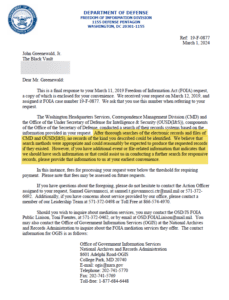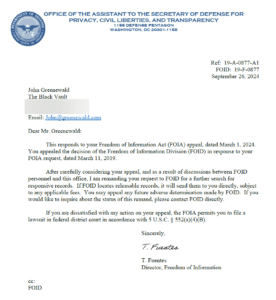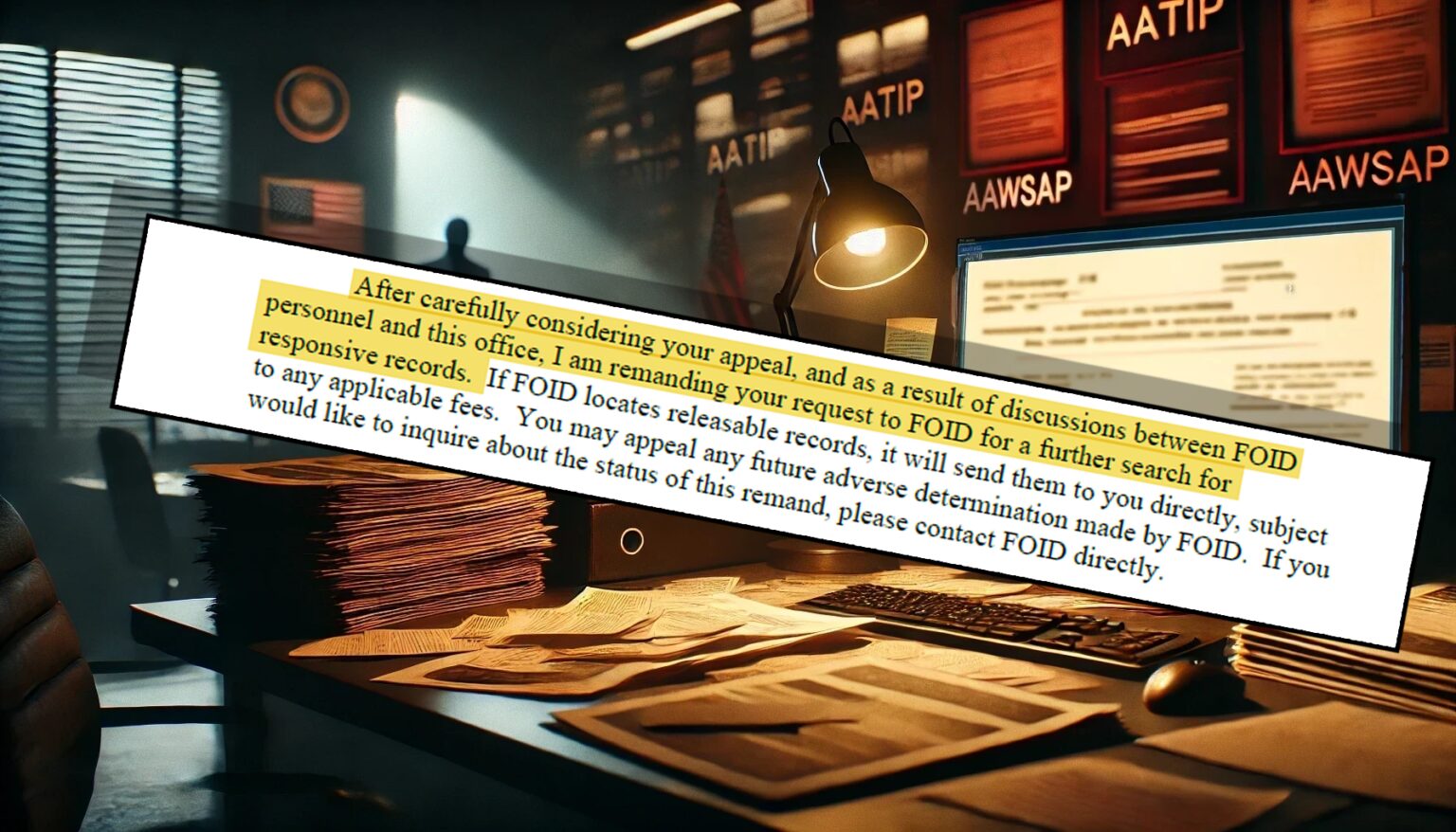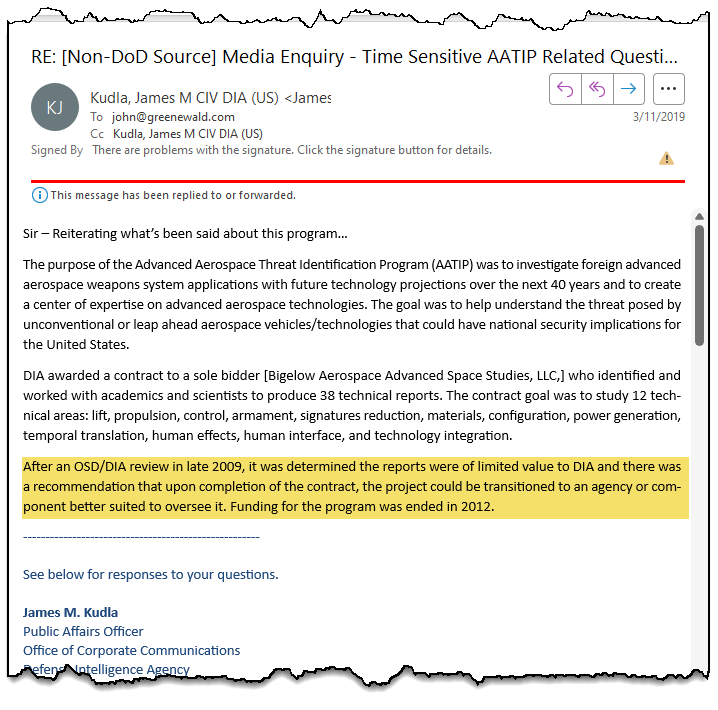In a long-standing battle for transparency, The Black Vault has finally seen progress in a FOIA case dating back to March 2019. The original request, case 19-F-0877, sought records related to a 2009 review of the Advanced Aerospace Threat Identification Program (AATIP), as conducted by the Office of the Secretary of Defense (OSD) in conjunction with the Defense Intelligence Agency (DIA).
The review was confirmed by James M. Kudla, a former Public Affairs Officer at the DIA, who stated on March 11, 2019, that “After an OSD/DIA review in late 2009, it was determined the reports were of limited value to DIA and there was a recommendation that upon completion of the contract, the project could be transitioned to an agency or component better suited to oversee it.”
Despite this confirmation, the FOIA request hit a roadblock. In March 2024, The Black Vault received a “no records” response from the FOIA office, sparking an appeal. The appeal highlighted the apparent contradiction between the government’s response and Kudla’s statement, arguing that the confirmation of the review strongly suggested the existence of documents.

The appeal further argued that OSD and DIA have often used the terms AATIP and the Advanced Aerospace Weapon System Applications Program (AAWSAP) interchangeably, complicating the search for records.
This confusion between program acronyms has been a longstanding issue, with many key figures involved in the programs offering conflicting narratives. Dr. James Lacatski, former director of AAWSAP at DIA, Dr. Hal Puthoff, former AAWSAP contractor at Bigelow Aerospace Advanced Space Studies (BAASS), and Luis Elizondo, the man who claims to have run the AATIP, have all provided differing accounts of the relationship between AATIP and AAWSAP, contributing to an environment of confusion about how both programs, or the one program with a nickname, ultimately played out.
The appeal cited legal precedent, referencing McGehee v. CIA, which requires agencies to conduct searches reasonably calculated to uncover all relevant documents. Given the interchangeable use of program names and the confirmation from the DIA, The Black Vault argued that a more thorough search was necessary. The appeal stated, “Rejecting the request based on a difference in acronym would be unfair, especially considering the significant time that has elapsed since the initial request.”

On September 27, 2024, the appeal was granted. The response from the FOIA office stated, “After carefully considering your appeal, and as a result of discussions between FOID personnel and this office, I am remanding your request to FOID for a further search for responsive records. If FOID locates releasable records, it will send them to you directly, subject to any applicable fees. You may appeal any future adverse determination made by FOID.”
The decision to remand the request acknowledges that the initial search may not have been thorough, reflecting broader issues within the government’s handling of FOIA requests, including those specifically for AATIP and AAWSAP records.
However, the confusion surrounding these programs extends beyond the government. Luis Elizondo, often cited in media reports about AATIP, has repeatedly contradicted himself regarding the nature of AATIP and AAWSAP and his role in both. Meanwhile, Dr. Hal Puthoff has stated that AATIP was merely a nickname for AAWSAP, further muddying the waters by displaying that those who directly worked within these programs do not agree with each other on many of the details.
These conflicting statements from former government officials have fueled controversy and speculation about the true nature of AATIP and AAWSAP. While some, like Elizondo, assert clear distinctions between the programs, others blur the lines, leaving researchers and journalists struggling to piece together an accurate account. This has inadvertently played into the hands of the FOIA offices, allowing them to deny requests on technical grounds which further complicates public understanding.
The confusion between AATIP and AAWSAP—whether intentional or inadvertent—has become a tool for denial and obfuscation, with both the government and former insiders contributing to an apparent mess of a narrative.
###
Follow The Black Vault on Social Media:


